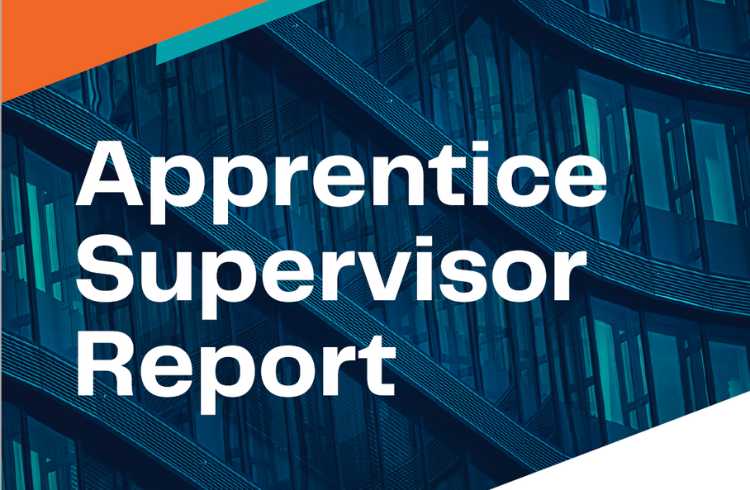Solicitor Apprenticeships
Level 7 Solicitor Apprenticeships
A solicitor level 7 apprentice can progress legal matters and transactions by using legal expertise and commercial insight to produce solutions that are tailored to your clients. The programme brings together our longstanding legal apprenticeship expertise with the technical expertise of BARBRI, providing an alternative route to a solicitor qualification.
A solicitor apprentice is a great investment for your law firm or legal team and at Damar, we offer two forms of solicitor apprenticeships:
- Our shorter form solicitor apprenticeship is designed for law graduates, holders of a graduate diploma in law (GDL), those with CILEX level 6, licensed conveyancers, and similar.
- Our longer form solicitor apprenticeship is designed for non-law graduates, successful paralegal apprentices, those with CILEX level 3, conveyancing technicians, licensed paralegals, and similar
How solicitor apprenticeships can strengthen your organisation
Investing in solicitor apprenticeships offers your legal firm or team a powerful strategy to develop legal talent. Other ways that a solicitor apprentice can lead to a stronger and more productive workforce include:
- Enhancing QWE: A structured framework that allows apprentices to build and apply learning across various legal tasks.
- Represent and assist clients: Solicitor apprentices can undertake research, draft correspondence, and provide expert legal advice.
- Provide a talent pipeline: Solicitor apprentices with Damar can become qualified within shorter timeframes, and bring different skills and approaches that complement the traditional qualifying route.
- Increased diversity: By breaking down traditional barriers to entry and attracting talent from a wide range of backgrounds, you’re widening your talent pool and increasing your workforce diversity.

What sets Damar Training apart
At Damar, we have the only level 7 solicitor apprenticeship built specifically for the SQE. Some of the key features of our solicitor apprenticeships include:
Our partnership with BARBRI
Our apprenticeships are underpinned by BARBRI’s AI-powered learning platform that flexes content and questioning to shore up weaknesses and develop strengths.
Our people
Our dedicated team of experts are always on standby during the apprenticeship journey. All apprentices are supported by Damar coaches with previous experience as solicitors.
Our pathways
We’ve got two high-quality pathways that provide different entry points for different backgrounds. In addition, individuals earlier in their career can start out on our business administration and paralegal apprenticeships, before progressing onto solicitor.


“We have been particularly impressed by the structure of the course and methods of delivery, which seem to allow a lot of flexibility for the apprentice, whilst also providing a good level of support and guidance.”
Fiona Anthony
Practice and Professional Development Manager
nplaw
Solicitor level 7 apprenticeship delivery
Wondering how our solicitor apprenticeships actually work? At Damar, our apprentices benefit from BARBRI’s SQE (Solicitors Qualifying Examination) intelligent online learning platform and our structured and supportive coach-led environment. The delivery involves:
- BARBRI system: Apprentices will have access to a detailed dashboard, showing SQE1 progress and the likelihood of exam success, benchmarked against other students.
- Group workshops and strategy sessions: Your apprentice will work with experienced tutors to develop skills and exam techniques.
- 1:1 coaching visit: Every six weeks, the Damar coach will meet with the apprentice to review progress, discuss their personal development, and sign off on completed modules.
- Activity briefs: Apprentices are set an activity brief linked to one or more competencies in the apprenticeship standard, allowing them to embed and contextualise their learning and build a portfolio of QWE evidence.
- Review meeting: Every 12 weeks, the Damar coach will meet with the apprentice and their line manager to review their progress.
- Shorter-form solicitor apprenticeships: 18 months
- Longer-form solicitor apprenticeships: 35 months
Please note: The durations above do not include end-point assessment or the time needed to issue results, which may take approximately four months. Additionally, consideration should be given to the possibility that re-sits for SQE1 and/or SQE2 could be required, which would further impact the overall programme duration.
People of all ages and educational backgrounds can undertake apprenticeships, but there are some restrictions, the most important of which are:
- The employer and the training provider must ascertain that the apprenticeship will allow the individual to gain substantive new skills.
- The apprenticeship must align with the skills needs of the apprentice’s role.
- The apprentice must be employed, usually for 30+ hours a week, and work more than 50% of their time in England.
- All apprenticeships must take at least 12 months with apprentices spending a minimum of 6 hours per week in off-the-job training. NB: solicitor apprentices can be expected to need 8 to 9 hours a week of off-the-job-training time. There is more on how we maximise the benefits of off-the-job training here.
Our solicitor apprenticeship programmes are designed as progression routes which means that the following additional eligibility criteria apply:
- For the shorter-form programme, applicants must have been employed in a law firm (or in-house) for 30+ hours per week, for at least 6 months prior to enrolment, and have either a law degree or graduate diploma in law (ideally within the last five years) or other relevant legal qualifications at a similar level (e.g., CILEX L6 or Licensed Conveyancer).
- For the longer-form programme, applicants must be employed in a law firm (or in-house) for 30+ hours per week and have either a non-law degree or have successfully completed a paralegal apprenticeship. or similar (e.g., CILEX L3 or Conveyancing Technician)
- We do not want to restrict access for exceptional candidates – please consult our team.
- In all cases, candidates must have at least 5 GCSES (or equivalent) at grade 4 or above, including maths and English.
- LPC graduates are ineligible as they do not need 12 months of study to prepare for SQE2.
SQE study programmes develop and test knowledge.
SQE1 content and subjects tested:
- Business Law and Practice (including taxation)
- Dispute resolution
- Contract
- Tort
- The legal system of England and Wales
- Legal drafting
- Property Practice (including taxation)
- Solicitors’ Accounts
- Land Law
- Trusts
- Criminal law and Practice
Ethics and professional conduct will be evidenced and examined throughout the course.
SQE 2 content and subjects tested:
- Client interviewing (and attendance notes)
- Advocacy
- Case and matter analysis
- Legal research and written advice
- Legal writing
- Legal drafting
- Criminal litigation (including advising clients at the police station)
- Dispute resolution
- Property practice
- Wills and intestacy, probate administration and practice
- Business organisations, rules and procedures (including money laundering and financial services)
Development, application and evidencing of performance against each aspect of the Solicitors Regulation Authority’s statement of solicitor competence.
Working with their Damar coach, apprentices complete contextualised activity briefs that enable them to put their learning into practice at work and build robust evidence of qualifying work experience (QWE).
Additional content in longer-form solicitor apprenticeships:
- Foundations of English law course at the start to ensure that all apprentices have a core understanding of legal principles.
- SQE content is delivered over a longer period, with additional coaching support – because these apprentices have further to travel.
- “Preparation for Practice” content ensures that apprentices develop the wider business and practice skills that they will need.
Employer partners and apprentices are supported throughout the apprenticeship. The apprentice has a dedicated coach who provides 1:1 support, alongside the group coaching sessions and apprentice forums where they can engage with other appentices on the same programme. Review meetings with the apprentice, line manager and coach are held every 12 weeks.
Apprentices with additional learning needs also have the opportunity to meet with our SEND Co-ordinator, who will put together a personalised support plan.
In addition, employer partners have a business development manager/executive they can contact at any time.
All solicitor apprenticeships embed the functional use of maths and English as well as personal development topics in areas such as equality and diversity and British Values.
The form of assessment and required standard are as for all solicitors qualifying via the Solicitors Qualifying Examination (SQE).
- SQE1 is completed during the period of on “on programme” learning.
- SQE2 is the end-point assessment for the solicitor apprenticeship.
SQE1 must be successfully completed before SQE2.
As a qualified solicitor, further progression and cross-qualification is possible, for example to partnership (private practice) or general counsel (in-house), judicial roles and, via cross-qualification, to the Bar.
If your annual UK wage bill is over £3 million, the cost of training can be funded via the Apprenticeship Levy. We can help you navigate your Apprenticeship Service account to access this funding.
If your annual UK wage bill is below £3 million, the government covers 95-100% of the training costs.
For apprentices aged up to 21, the apprenticeship is fully government-funded*. For apprentices aged 22 and over, the apprenticeship is 95% government-funded*. These new funding rules are applicable to apprentices starting from 1 April 2024.
*Please note: Some apprenticeships have accreditation costs which are not eligible for government funding
Please get in touch for more information.
The pathway to your future begins with Damar
Ready to invest in the future of your workforce? With a level 7 solicitor apprenticeship from Damar, you’re equipping your team with the essential skills, knowledge, and behaviours that they need to thrive in a professional legal setting. With over 40 years of experience in the apprenticeship field, we’re here to guide you through the process.
Unlock your future legal talent by making an enquiry with Damar today.
Solicitor apprenticeship FAQs
Pending the outcome of the government’s review, the usual funding routes for solicitor apprenticeships (via the levy or 95-100% government funding for SMEs) is still available.
Consult directly with a member of our team for the most up-to-date and specific information regarding funding for solicitor apprenticeships.
A solicitor apprenticeship with Damar Training will bring significant value to your law firm. Our collaborative approach with BARBRI means that you can mould apprentices from the beginning with your organisation’s specific culture, values, and practices, creating solicitors who are perfectly aligned with your business needs. Read our employer testimonials to discover more about the benefits.
A solicitor apprentice will be able to develop a deep understanding of the English legal system, including core areas that will be applied to everyday work. They will be able to analyse complex legal issues, draft legal documents, and understand their clients’ needs. All in all, an investment in a solicitor apprentice is an investment in your organisation’s future.
If we haven’t answered your question above, have a read of our employer FAQs for more information.


